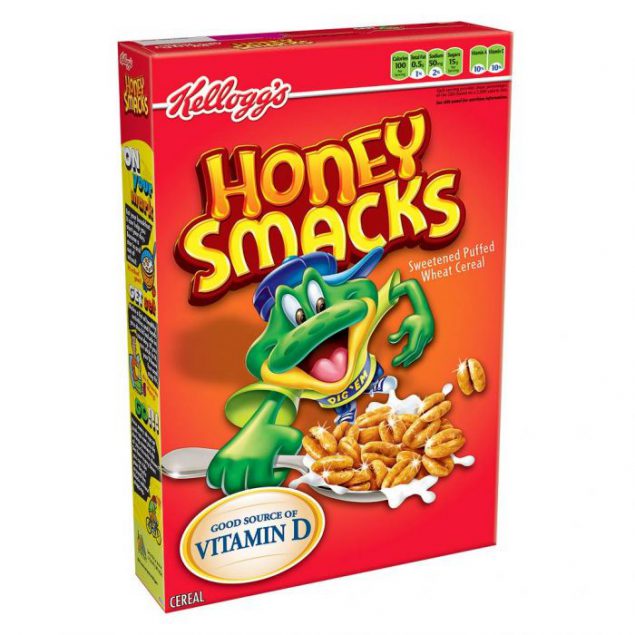In a follow-up on the multistate outbreak of Salmonella Mbandaka infections linked to Kellogg’s Honey Smacks cereal, federal health officials report an additional twenty-seven ill people from 19 states, bringing the outbreak total to 100 cases from 33 states, as Colorado and Florida report their first cases.

Of the total cases, 30 people required hospitalization for their illness and no deaths were reported.
Health officials in several states collected Kellogg’s Honey Smacks cereal from retail locations and ill people’s homes for testing. Laboratory testing identified the outbreak strain of Salmonella Mbandaka in a sample of unopened Kellogg’s Honey Smacks cereal collected from a retail location in California. Laboratory testing also identified the outbreak strain in samples of leftover Kellogg’s Honey Smacks cereal collected from the homes of ill people in Montana, New York, and Utah.
In addition, state and local health officials continue to interview ill people and ask questions about the foods they ate and other exposures in the week before they became ill. Fifty-five (85%) of 65 people interviewed reported eating cold cereal. In interviews, 43 people specifically reported eating Kellogg’s Honey Smacks cereal. Ill people in this outbreak reported this cereal more often than any other cereals or food items.
The Kellogg Company recalled Honey Smacks cereals on June 14, 2018. However, the FDA reports that recalled Kellogg’s Honey Smacks cereal is still being offered for sale.
- Do not eat any Kellogg’s Honey Smacks cereal. This advice applies to Honey Smacks in any size package and with any “best if used by” date.
- If you have recalled Kellogg’s Honey Smacks cereal:
- Throw out the cereal or return it for a refund.
- If you store cereal that looks like Kellogg’s Honey Smacks in a container without the packaging and don’t remember the brand or type, throw it away. Kellogg’s Honey Smacks is an oval-shaped, sweetened puffed wheat cereal with a golden brown color.
- Thoroughly wash the container with warm, soapy water before using it again, to remove harmful germs that could contaminate other food.
- Vibrio parahaemolyticus outbreak affects 12, linked to eating fresh crab meat imported from Venezuela
- France reports 3rd measles death of 2018
- Dengue epidemic in Reunion near 6,000 cases
- India: Cardiovascular disease deaths rising, especially in rural areas and young adults
- Smallpox treatment, TPOXX, receives FDA approval
- Cholera outbreaks haunt Central and West Africa
- Epstein-Barr Virus: The red-headed step child of the Herpes Virus family


